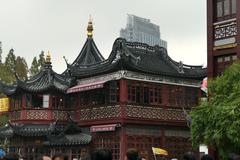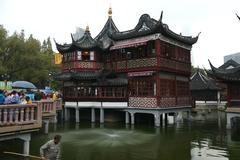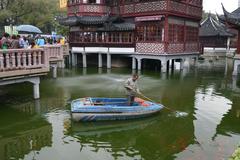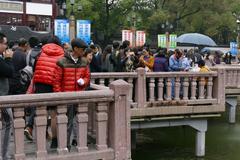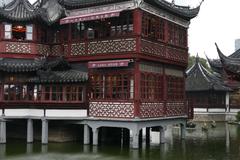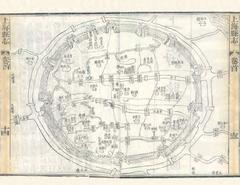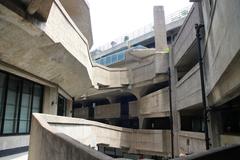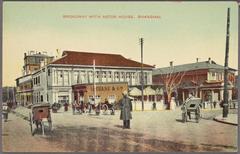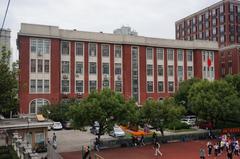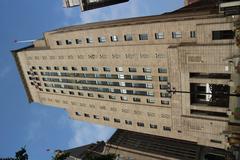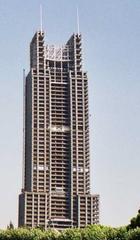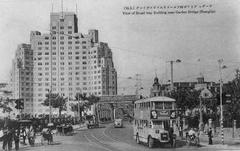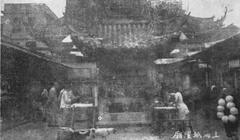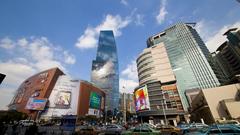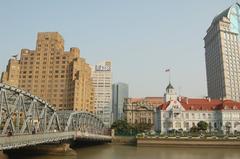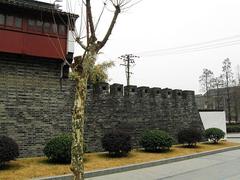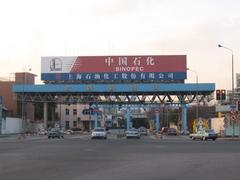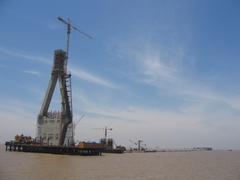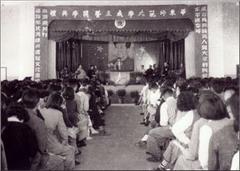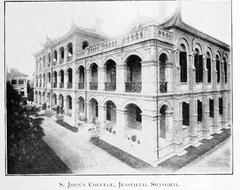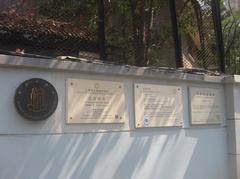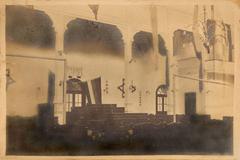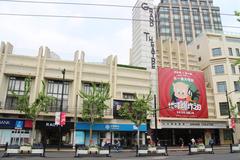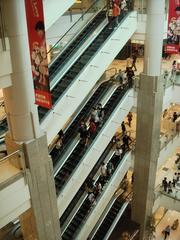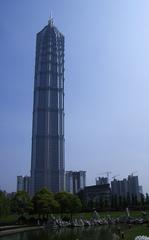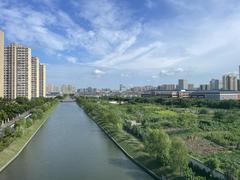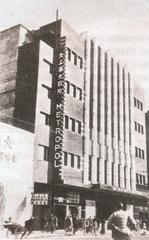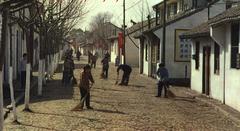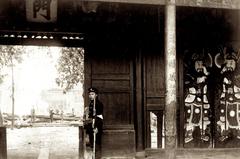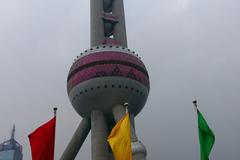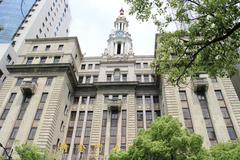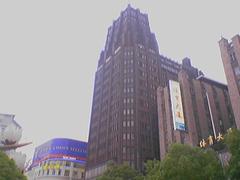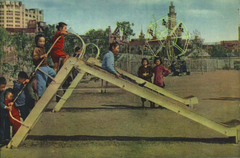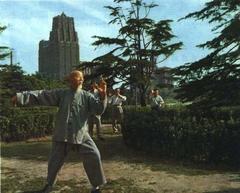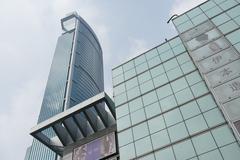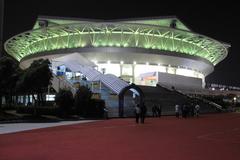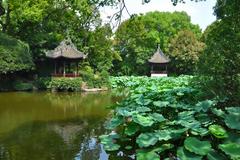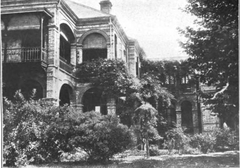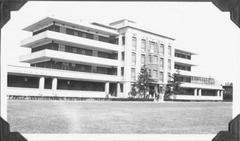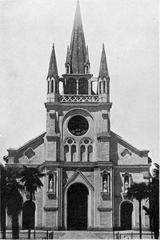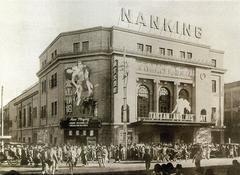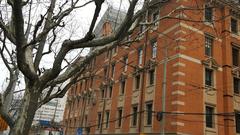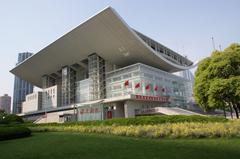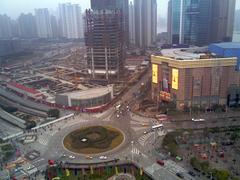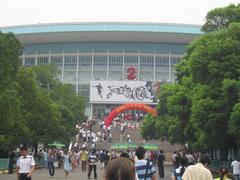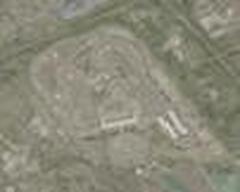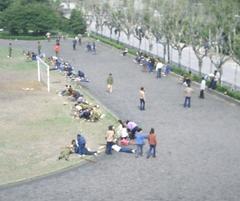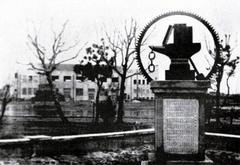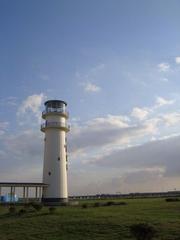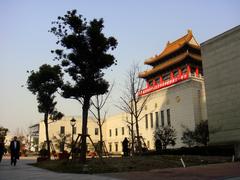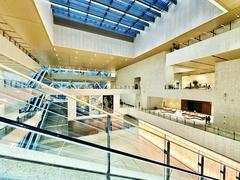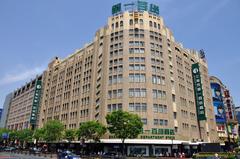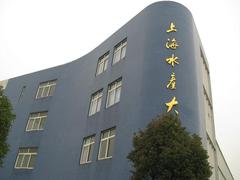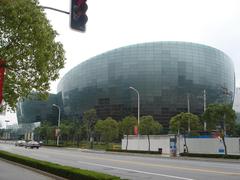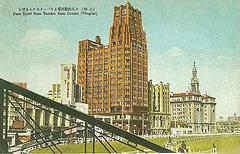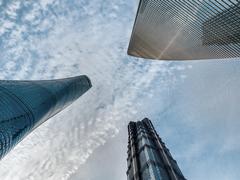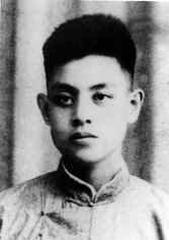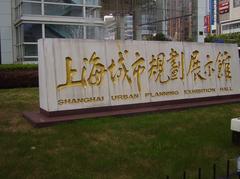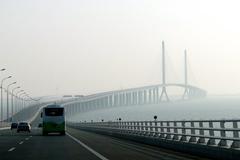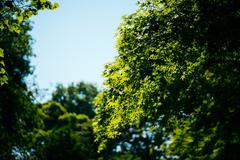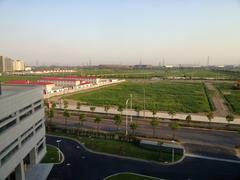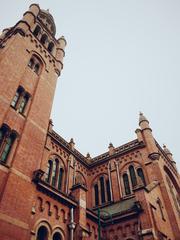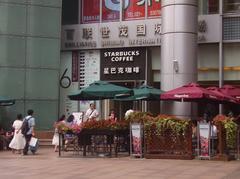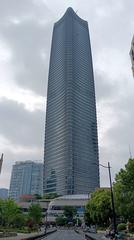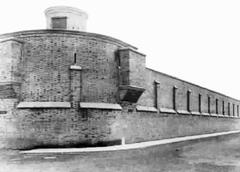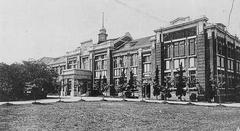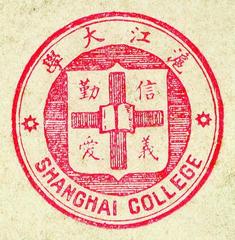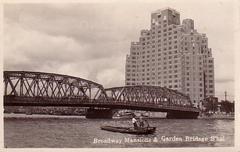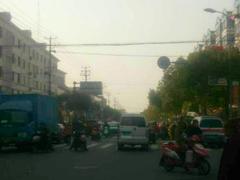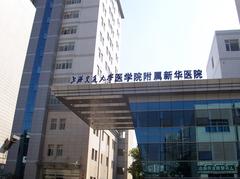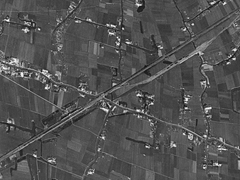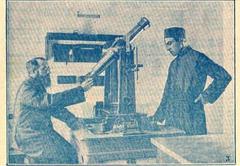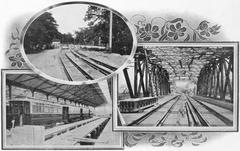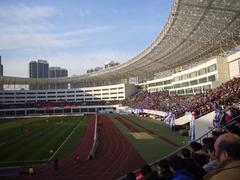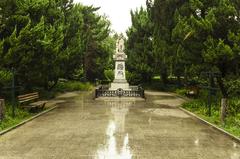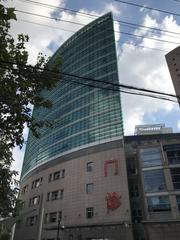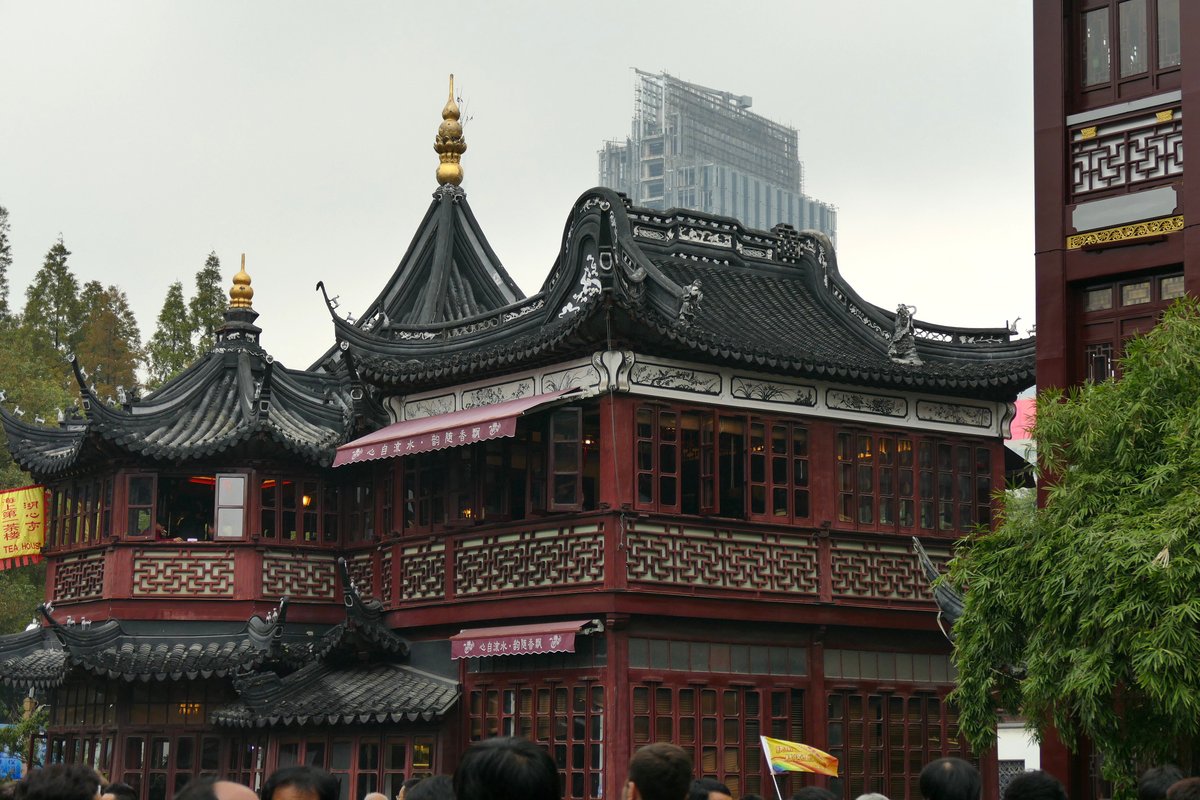
Visiting Fangbang Zhong Road in Shanghai: History, Tickets, and Travel Tips
Date: 18/07/2024
Introduction
Welcome to Fangbang Zhong Lu (方浜中路), a street rich in history and culture, nestled in the heart of Shanghai. This guide aims to uncover the captivating history of Fangbang Zhong Lu, provide practical information for your visit, and highlight nearby attractions. Fangbang Zhong Lu, often romanized as Fangbang Middle Road, is a crucial artery within Shanghai’s oldest urban area. Its story offers a glimpse into the city’s transformation from a humble fishing village to a global metropolis. Fangbang Zhong Lu is intertwined with Shanghai’s evolution, from its early days as a network of creeks and canals to its current status as a bustling commercial hub. The street’s name, which translates to ‘middle road,’ reflects its central position within the city’s layout. Over time, the area has transitioned from a defensive moat during the Ming Dynasty to a vibrant center of trade and cultural exchange. Today, Fangbang Zhong Lu stands as a testament to Shanghai’s rich history, offering visitors a unique blend of old-world charm and modern vibrancy (Trip.com - City God Temple).
Table of Contents
- [Historical Background of 方浜中路 (Fangbang Zhong Lu)](#historical-background-of-方浜中路-fangbang-zhong-luhistorical-background-of-方浜中路-fangbang-zhong-lu)
- [Early Beginnings and the Significance of Water](#early-beginnings-and-the-significance-of-waterearly-beginnings-and-the-significance-of-water)
- [From Defensive Moat to Commercial Hub](#from-defensive-moat-to-commercial-hubfrom-defensive-moat-to-commercial-hub)
- [The Evolution of a Street - From ‘Moat Middle Road’ to ‘Fangbang Middle Road’](#the-evolution-of-a-street---from-moat-middle-road-to-fangbang-middle-roadthe-evolution-of-a-street---from-moat-middle-road-to-fangbang-middle-road)
- [The Rise of the City God Temple and its Impact](#the-rise-of-the-city-god-temple-and-its-impactthe-rise-of-the-city-god-temple-and-its-impact)
- [The Legacy of Trade and Cultural Exchange](#the-legacy-of-trade-and-cultural-exchangethe-legacy-of-trade-and-cultural-exchange)
- [Preservation and Modern Transformation](#preservation-and-modern-transformationpreservation-and-modern-transformation)
- [Practical Visitor Information](#practical-visitor-informationpractical-visitor-information)
- [Visiting Hours](#visiting-hoursvisiting-hours)
- [Tickets](#ticketstickets)
- [Accessibility](#accessibilityaccessibility)
- [Travel Tips](#travel-tipstravel-tips)
- [Nearby Attractions](#nearby-attractionsnearby-attractions)
- [Yu Garden](#yu-gardenyu-garden)
- [Shanghai Old Street](#shanghai-old-streetshanghai-old-street)
- [Huxinting Tea House](#huxinting-tea-househuxinting-tea-house)
- [Exploring the Area](#exploring-the-areaexploring-the-area)
- [Stroll along the Zigzag Bridge](#stroll-along-the-zigzag-bridgestroll-along-the-zigzag-bridge)
- [Take a boat ride on the lake](#take-a-boat-ride-on-the-laketake-a-boat-ride-on-the-lake)
- [Visit the Shanghai Museum of Arts and Crafts](#visit-the-shanghai-museum-of-arts-and-craftsvisit-the-shanghai-museum-of-arts-and-crafts)
- [Explore the surrounding streets and alleys](#explore-the-surrounding-streets-and-alleysexplore-the-surrounding-streets-and-alleys)
- [Visitor Tips](#visitor-tipsvisitor-tips)
- [FAQ](#faqfaq)
- [Conclusion](#conclusionconclusion)
- [References](#referencesreferences)
Historical Background of 方浜中路 (Fangbang Zhong Lu)
方浜中路, often romanized as Fangbang Zhong Lu, holds a captivating history intertwined with the evolution of Shanghai. This bustling street represents a crucial artery within Shanghai’s oldest urban area, offering a glimpse into the city’s transformation from a humble fishing village to a global metropolis.
Early Beginnings and the Significance of Water
The history of 方浜中路 is intrinsically linked to water. ‘方浜,’ meaning ‘square pond’ or ‘rectangular moat,’ directly references the area’s watery past. Before Shanghai’s rise as a major port, the area surrounding 方浜中路 was a network of creeks and canals. These waterways were the lifeblood of the community, facilitating trade, transportation, and daily life.
From Defensive Moat to Commercial Hub
During the Ming Dynasty (1368-1644), a defensive wall was erected around Shanghai to protect it from pirates and invaders. 方浜, originally a natural waterway, was incorporated into this defense system, becoming a moat that encircled the city. This strategic location along the moat contributed to the area’s early development.
As Shanghai prospered, the area around 方浜 transitioned from a defensive perimeter to a bustling commercial center. Merchants and traders flocked to the city, drawn by its strategic location and growing economic opportunities. The waterways, including 方浜, became vital arteries for transporting goods and people, further fueling the area’s growth.
The Evolution of a Street - From ‘Moat Middle Road’ to ‘Fangbang Middle Road’
The name ‘方浜中路’ itself reflects the area’s evolution. ‘中路’ translates to ‘middle road,’ indicating its position within the city’s layout. Over time, the character ‘浜’ (pronounced ‘bāng’ in this context) evolved in pronunciation to ‘fāng,’ leading to the current name ‘Fangbang.’ This subtle shift in pronunciation reflects the gradual transformation of the area and its integration into the expanding city.
The Rise of the City God Temple and its Impact
A pivotal moment in the history of 方浜中路 was the construction of the City God Temple (城隍庙, Chénhuángmiào) in the 15th century. This grand temple complex, dedicated to the city’s guardian spirit, became a focal point for religious and cultural activities. The temple’s presence attracted pilgrims and worshippers, further stimulating economic activity and transforming the area around 方浜中路 into a vibrant hub.
The Legacy of Trade and Cultural Exchange
Throughout the 19th and early 20th centuries, Shanghai experienced rapid growth as a major international port. 方浜中路, situated within the city’s historical core, continued to thrive as a center for trade and cultural exchange. The street and its surrounding alleys bustled with shops, teahouses, theaters, and traditional Chinese medicine stores, reflecting the area’s diverse and dynamic character.
Preservation and Modern Transformation
Today, 方浜中路 stands as a testament to Shanghai’s rich history. While the original moat has long since been filled in, the street retains its historical charm. Many of the traditional buildings have been preserved or restored, offering a glimpse into the city’s architectural heritage. The area surrounding the City God Temple remains a popular destination for both tourists and locals, showcasing traditional crafts, snacks, and cultural performances.
However, modernization has also left its mark on 方浜中路. Alongside the historical structures, modern shops and restaurants cater to contemporary tastes. This juxtaposition of old and new creates a unique atmosphere, reflecting the ongoing evolution of Shanghai as a global city while honoring its storied past.
Practical Visitor Information
Visiting Hours
Fangbang Zhong Lu is open 24 hours, but individual shops and attractions may have varying hours. The City God Temple is typically open from 8:30 AM to 4:30 PM.
Tickets
Entry to Fangbang Zhong Lu is free. However, some attractions like the City God Temple may require a ticket. The entrance fee for the City God Temple is approximately 10 RMB.
Accessibility
The area is pedestrian-friendly but can be crowded, especially during weekends and holidays. Wheelchair access is available in most areas, though some older buildings may have limited accessibility.
Travel Tips
- Wear comfortable shoes as you will be walking a lot.
- Keep an eye on your belongings as it can get crowded.
- Try local snacks from street vendors for an authentic experience.
Nearby Attractions
Yu Garden
A classical Chinese garden located near Fangbang Zhong Lu, known for its beautiful landscapes and historical significance. (Yuyuan Garden Official Website)
Shanghai Old Street
Offers a glimpse into traditional Shanghai with its preserved architecture and vibrant market atmosphere. (Travel China Guide - Shanghai Lao Jie)
Huxinting Tea House
A historic teahouse offering a serene spot to enjoy traditional Chinese tea. (China Highlights - Huxinting Teahouse)
Exploring the Area
Stroll along the Zigzag Bridge
This iconic bridge, with its nine zig-zagging turns, is a popular spot for photos and offers picturesque views of Yuyuan Garden. (China Travel Guide - Zigzag Bridge)
Take a Boat Ride on the Lake
Enjoy a relaxing boat ride on the lake in Yuyuan Garden, taking in the scenery and the traditional architecture from a different perspective.
Visit the Shanghai Museum of Arts and Crafts
Located near the Confucian Temple, this museum showcases a wide range of traditional Chinese arts and crafts, including jade carvings, embroidery, and furniture. (Shanghai Museum of Arts and Crafts Official Website)
Explore the Surrounding Streets and Alleys
Venture beyond the main attractions and discover the hidden gems tucked away in the narrow streets and alleys of the Old City. You’ll find traditional shops, teahouses, and local eateries, offering a glimpse into the authentic life of the area.
Visitor Tips
- Plan your visit: Fangbang Zhong Lu can get crowded, especially on weekends and holidays. Consider visiting early in the morning or on weekdays for a more relaxed experience.
- Wear comfortable shoes: You’ll be doing a lot of walking, so wear comfortable shoes.
- Bargain for souvenirs: Bargaining is expected in the market areas, so don’t be afraid to negotiate prices.
- Try the local snacks: Fangbang Zhong Lu is a foodie’s paradise, so be sure to sample some of the local snacks and delicacies.
- Learn a few basic Mandarin phrases: While many people in the area speak some English, learning a few basic Mandarin phrases will enhance your experience and help you interact with locals.
- Be aware of your belongings: As with any crowded tourist destination, be mindful of your belongings and take precautions against pickpocketing.
- Respect local customs: When visiting temples and other religious sites, dress modestly and be respectful of local customs and traditions.
FAQ
Q: What are the visiting hours for Fangbang Zhong Lu?
- Fangbang Zhong Lu is accessible at all hours, but the best time to visit is during the day when the street is most vibrant.
Q: Do I need a ticket to visit Fangbang Zhong Lu?
- Entry to Fangbang Zhong Lu is free. However, some attractions like the City God Temple may require a ticket, which is approximately 10 RMB.
Q: Is Fangbang Zhong Lu wheelchair accessible?
- The area is generally wheelchair accessible, though some older buildings may have limited accessibility.
Conclusion
Fangbang Zhong Lu is more than just a street; it’s a living museum of Shanghai’s rich history and culture. From its origins as a defensive moat to its current status as a bustling commercial hub, Fangbang Zhong Lu continues to captivate visitors with its unique blend of old and new. Plan your visit today to experience the charm and history of one of Shanghai’s most iconic streets. For more information and updates, download our mobile app Audiala, check out our other related posts, or follow us on social media.
